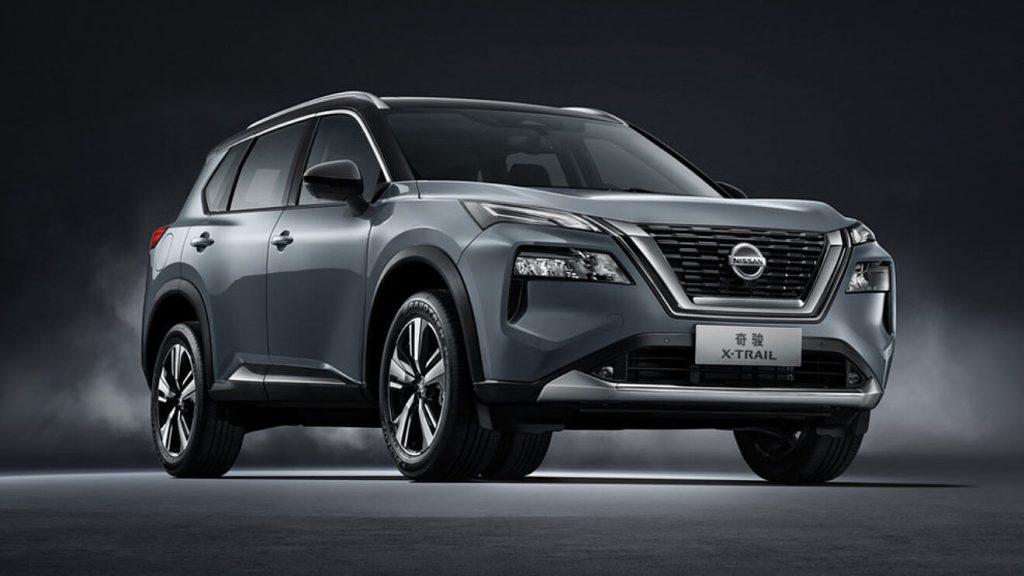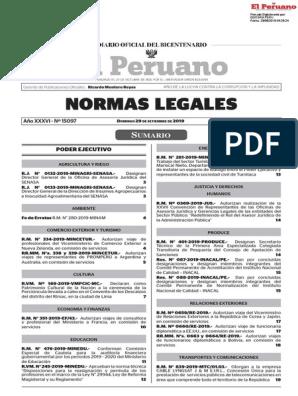MOTOR&SPORTS | From the electrified Lexus to the 2022 Nissan X-trail
Advertising
The news on two and four wheels with the visibility of new models. A review of the history and curiosities along with the mechanics, road safety and brief news and the Montecarlo Rally where Loeb wins the first appointment with the WRC1.
LEXUS ELECTRIFIED SPORT. CUMIN OF THE FUTURE.
This concept electric car model anticipates the brand's first fully electric supercar. With about 700 kilometers of autonomy, it is even closer to the electrified future and to great performance. It saw the light, as a concept, at the end of last year and it is possible that it will change its image when it reaches production. Its design does not go unnoticed with a long hood, large wheel arches and a spectacular front aerodynamic kit. Lexus has not specified anything about the engine and battery that the model will have, but it did highlight the performance objectives. The Japanese manufacturer wants it to accelerate from zero to one hundred km in just over two seconds and will have a range close to seven hundred kilometers. There is no price data or interior pictures.
NISSAN X-TRAIL 2022. MORE POWER.
The new generation of the Nissan X-Trail lands in Europe next spring. The Japanese brand has waited two years to start selling the largest SUV in its offer for the old continent, since its presentation at the Roque, as it is known in the United States. Its offer is limited to that it will be a hybrid e-Power version. A system of its own, and unique, of the brand that will not vary from the one launched by the Qashqai, the X-Trail being the second model with this system in Europe. Technically, it is a self-rechargeable hybrid that has an electric motor that moves the front axle and a combustion engine, which only acts as a generator to feed the electric one, offering a maximum power of 140 kW, equivalent to 190 horsepower. The gasoline develops 154 hp. A combination that is almost comparable to the operation of an electric, without delays in power delivery and without concerns about low autonomy, and with the added bonus of four-wheel drive.
INVICTA ELECTRIC D2S. THE PRICE TRICK.
The Invicta Electric D2S is technically by far the cheapest electric car on the market. Derived from the Zhidou D2S, it is for sale in Spain from 9,995 euros. A price that keeps a trick to get that cost and what you get in return. The model will not be an option that fits what you are looking for. It may not even coincide with what is meant by a car, although it is and you need a B license to drive it. This Chinese car is very small: it measures 2.81 meters long, 1.50 meters wide and 1.55 meters high. These reduced external dimensions allow it great maneuverability and it is undoubtedly an ally for agile mobility on any street, however narrow it may be. It has only two seats and a small space behind the seats serving as a trunk. It offers the basic equipment for everyday comfort and a range, depending on the version, of 250 km in the NEDC cycle. The brand announces a price of 9,995 euros for the version with a 17 kWh battery and 150 km of autonomy, but with a trick. To take advantage of that price, you have to resort to brand financing, first; and receive aid from the Moves II Plan, afterwards. With the brand discounts (with financing discount included), the price of the car is 18,495 euros. Assuming that the maximum aid of 5,500 euros from the Moves Plan is received, the car stays at exactly 9,995 euros.
CITROËN KAR-A-SUTRA. CONFIGURABLE MULTISPACE.
The year 1984 was key in motorsports. The point already part did not come for a technical improvement but for a new type of vehicle. That year the minivan concept entered the American and European markets with force. In the first thanks to Dodge Caravan devised by Lee Iacocca, while in the second by the appearance of the Renault Space. Equipped with a new vision of habitability, the minivans extended the comfort of the old vans thanks to their mobile seats. However, this idea was raised years before with the Citroën Kar-a-Sutra. A prototype conceived by the architect and industrial designer Mario Bellini, who presented it at the exhibition dedicated to Italian design organized by the MOMA in New York in 1972. With it, they not only studied the possibilities of a multi-configurable space, but also speculated with the future of mobility and private vehicles.
SPAIN IN THE QUEUE OF THE ELECTRIFICATION OF EUROPE.
So clear and realistic is the situation of the electric car in Spain. The voice of alarm has been given by the president of SEAT, Wayne Griffihs, who affirmed that Spain is behind in electrification. Only Greece is below and this may affect Volkswagen's plans to make zero-emission vehicles. Sales in the country are not advancing at the rate anticipated by the German Group, which required that the share of plug-in hybrid vehicles be 10% of the total to manufacture EVs at the Martorell and Landaben plants. But sales in 2021 remained at 7.8% and the second requirement, that of installing 28,000 recharging points, was not met either.
YAMAHA DEVELOPS A V8 HYDROGEN ENGINE.
Internal combustion engines run out of time, unless something prevents their end from being definitive. Hydrogen is one of the few hopes for these engines, and Yamaha has just shown that it can be used even in high-powered units. Coinciding with the Super Taikyu championship held in Okayama (Japan), Yamaha has presented a hydrogen V8 engine with 442 horsepower. The engine, for now, is a prototype, but it lays the groundwork for the development of high-performance engines using hydrogen as fuel. It is based on the 2UR block that Lexus uses in the RC-F, so it retains its five-litre displacement and power very close to what it offers using gasoline as fuel.
RISEMOUSSE B-SURE. GOODBYE TO THE PUNCH ON THE ROAD.
Thanks to Risemousse B-Sure comes an innovative safety system for asphalt motorcycle tires. The Italian company, known for its off-road tire solutions, introduced a revolutionary concept that makes it possible, in the event of a puncture, to reach a workshop for repair. By virtue of an electronic control built into its special MEPP mousse, Risemousse B-Sure ensures that the motorcycle maintains a moderate pace for a certain distance of kilometers without having to stop. A sophisticated electronic control with backlit LEDs allows the motorcyclist to monitor the pressure status of their tires in real time, warning of a puncture in the event that it occurs. The B-Sure mousse intervenes to reduce tire pressure by supporting the motorcycle and its rider, allowing greater control and stability, reaching a place where the punctured tire can be repaired.
DOWNSIZING ENGINES. SUCCESS OR FAILURE?
What many manufacturers saw as a salvation years ago seems to have turned into a stumbling block. About five years ago some reports suggested that manufacturers were going back to making larger displacement engines to meet regulations. And it is that downsizing was a perfect way to comply with the rulings of the European Union, a momentary solution that has forced many brands to go back, have these engines failed? All manufacturers saw it as a great solution. Downsizing managed, a priori, to lower consumption and CO2 emissions, two of the objectives both because of the customer's concern and because of the regulations to comply with. And, objectively, the manufacturers improved the numbers of these sections with smaller displacement engines and the application, in most cases, of a turbocharging system.

OMEGA ONE. THE FRICTIONLESS DISC MOTOR.
The end of the combustion engine seems to be a reality. Now an American company presents a combustion engine that not only stands out for its simplicity, but also for its lightness, power and economy. Astron Aerospace is in the process of developing a totally new engine architecture, which could be used not only in the car, but also in motorcycles, boats, or simply as a range extender. With the Omega one, as it is called, Astron completely dispenses with the principle of the piston engine. Here, according to the Americans, there would be a huge amount of friction and heat losses, which would lead to reduced performance. Furthermore, the internal combustion engine as it is known, with its complexity consisting of pistons, crankshaft, lubrication and cooling pumps, is extremely inefficient. The Omega one, on the other hand, dispenses with all these extras. A drive shaft is put into motion through two separate double discs. The first pair of disks takes over the work of a compressor and sucks in the air. The second pair of discs handles combustion. Since there is actually no combustion and compression chamber without a piston, counter-rotating discs have a recess and pin. If the two meet during rotation, the recess serves as a compression and combustion chamber, and the pin takes over the task of the piston, compressing the intake air and fuel mixture. In short: instead of the pistons moving up and down, here two disks rotate that perform precisely that function. A simple idea.
TAMARIT JADE. MOTORCYCLE CRAFTSMANSHIP.
The Spanish company Tamarit has become the largest manufacturer of Triumph motorcycles in the world. His latest work of art is called Jade. Tamarit is a totally Spanish brand based in Elche. It began its product offering in 2015. The Jade is the one hundredth motorcycle manufactured by Tamarit and has been entirely handmade. It is not the result of a client order, but the culmination of years of experience in the world of customization. From chassis to seat, this project involved 640 hours of manual labor. The project was based on three elements: gold, chrome and leather. For this, the best materials were used, such as the leather of the seat and the sides of the tank. Frame, swingarm and engine covers have been chrome plated for a classic look. As an engine they opted for a Thruxton 900, the now classic air-cooled two-cylinder engine, updated by reviewing each piece until an exceptional result was obtained. Another of the hallmarks of the Jade is its methacrylate dome that is reminiscent of the seventies. Of course, the price (unspecified) is for a work of art. Without the budget, it is not possible to buy a Tamarit, the brand has a line of clothing and accessories and even covers for tablets.
BRENDA VTR 300 TWIN TURBO. INNOVATION WITH TURBO.
Leaked sketches show what the Brenda VTR-300 Turbo could be, a new Supersport 300 that supposedly comes with a supercharging system, an unprecedented solution so far in these displacements. Brenda Motorsycles, a brand distributed in Spain by the Vegamoto group, unveiled some new models that attracted attention, among which there is a special project, La Brenda VTR-300 Twin Turbo. A motorcycle with a supercharged system. Based on the leaked sketches, you can see a modern and attractive sports car. Its components include an inverted fork, Brembo brakes, ten-spoke wheels, a low exhaust and, as a curiosity, a central section of the fairing that crosses its sides. Behind a tubular type chassis is imagined. With the pictures alone not much can be said about the supposed turbo or compressor system. The use of the same V-twin engine as the Brenda VTC-300 is intuited, with 298 cc and just over 30 horsepower. If the turbo is added, the benefits would be very remarkable for a Supersport 300. We will have to be attentive to the real information that appears.
BFG 1300 ODYSSEE. THE FRENCH GRAN TOURISM MOTORCYCLE.
At the beginning of the eighties three men had a dream, to create an authentic French motorcycle with the maximum of French components, the BFG 1300 Odyssée. The anthology with the Honda Gold Wing is a must, saving the distances, because like the Japanese this Odyssée was a tourist with a large fairing, cardan transmission and its engine was a four-cylinder boxer. This is the story of the three men who sought to bring glory back to the French motorcycle industry. These were Louis Boccardo, Dominique Favario and Thierry Grange. The initials of their last names are the initials of the brand they created in 1978. BFG- Boccardo, Favario and Grange- although they soon separated.
DAMON HYPERFIGHTER COLOSSUS. AN ELECTRIC MAXI NAKED.
The global electric motorcycle market will soon have a new protagonist: the Damon HyoerFighter Colossus, a naked electron capable of delivering performance never seen before in the electric motorcycle segment. Only one hundred units will be produced and it is strictly derived from the painted sister HyperSport. His figures open a new chapter in the evolution of the segment: if indeed the autonomy, with its 217 km in the mixed cycle. Its performance reaches 200 horsepower and 200 Nm of torque, raising it to world numbers reaching 270 km/h.
ROYAL ENFIELD HIMALAYAN 450. COMPLETE NEW.
It seems Royal Enfield is working on a new Himalayan 450 for 2023 with many new features. The main one is the adoption of a new 450 cc liquid-cooled engine. This mechanic will be around 40 horsepower and will put the Indian bike squarely in the fight with other medium-displacement trails. It is based on a new platform that the Indian manufacturer calls K1 and that will serve as the basis for giving life to new models of the brand, apart from the aforementioned trail. It is the first time that the Indians have made the leap to water mechanics. Apart from the new engine, new details appear such as the adoption of a new trellis-type tubular chassis or an inverted front fork. It will feature raised fenders and a flat rally-type seat. This new Royal Enfield Himalayan 450 is a new motorcycle concept, a little more radical and focused on the current off-road, with a tourist aspect and more marked versatility. The single-cylinder capable of producing 45 hp has sacrificed power in favor of better response at low and medium speeds.
CURIOSITIES.
THE MERCEDES OF 4.6 MILLION KILOMETRES.
A Mercedes 200D of the year 1976 has reached the sum of 4.6 million kilometers traveled, a record for a model of the German brand and that confirms the reliability and durability of its mechanics. The car is owned by Gregorios Sachinidis, a taxi driver from Thessalonica who keeps the Taxi to this day and continues to function perfectly. The heart that drives this Mercedes 200D is a 1,995 cc four-cylinder engine that develops 55 horsepower at 4,200 revolutions per minute and maximum torque of 113 Nm at 2,400 rpm. The secret of the car lies in the few electronics and components that can fail, as well as its solid mechanical injection pump, designed to last a lifetime. Note that this engine could run on low-quality gasoline, a virtue that has given it the scepter of the best taxi in European and Latin countries.
HISTORY.
BARREIROS AND ITS IMPERIAL CROWN LIMOUSINES.
From 1955 to 1965 the Imperial Crown was one of the most representative high-end limousines in the United States. However, from 1957 it was bodied by Ghia in his Turin workshops due to the decision of Virgil Exner and his design department. With the arrival of economic problems in Ghia and the last units of this salon on wheels were left unfinished, arriving in a poorly documented way at the hands of Barreiros in 1964 or 1965. Undoubtedly one of the least known chapters in the joint history between Chrsyler and the Spanish industrialist. Within all the chaos experienced by Ghia in the mid-sixties, the liquidation of the contract with Chrysler was one of the most important points and with the project paralyzed, taking them back to the United States was not a good idea. And it is that, after all, for about eight years Chryler did not have its own coachbuilders capable of doing the work of the latest Imperial Crown. In this way, the only sensible way to release these latest chassis and bodywork in Europe. The name that had possibilities was that of Barreiros. Undoubtedly a seal of trust for Chrysler, which made the Imperial Crowns end up at the Villaverde factory so that Barreiros could finish the job.
CLASSICS.
RAMBLER MARIN. AN AMERICAN FASTBACK.
The Rambler Marin (later AMC Marin) was a two-door fastback automobile manufactured in the United States by the American Motors Corporation from 1965 to 1967. A car that was marketed as personal luxury. Its low-roof design was previewed in the 1964 Rambler Tarpon show car, based on the compact Rambler American. 1965 and 1966 production model year Marlins were Rambler Classic two-door hardtop and mid-size fastback versions, and 1967 brought a major redesign in which the car was given the new, longer AMC Ambassador chassis and full-size. This version had a longer hood and numerous improvements including more interior space and new V8 engines.
MECHANICS.
POWER OF THE ELECTRICAL IN KW INSTEAD OF CV.
With the advent of electric vehicles, things have changed a lot. The energy consumption is no longer measured in liters at a hundred km to be measured in Wh/Km, or even in kWh/100 km. But one of the measures that most doubts is that its power is not measured in the usual horsepower of steam (CV), and are looked at in kilowatts (kW). The watt is the unit that expresses the power of an electric motor. Power is the measurement of the amount of work done per unit of time. The watt (also called watt), is named after the Scottish engineer James Watt, inventor of the steam engine. A kilowatt (abbreviated kW) is one thousand watts. The watt is the standardized unit for power recognized by the International System (SI) and is a metric unit. Knowing this, it is better understood why the power of any electrical element is measured in W. The power of electric cars is usually expressed as maximum power or peak power. For this reason, higher power and peak power data usually appear. Traditionally, the horsepower has been used, which is still another unit of power measurement, whose origin is older than electric motors. A horsepower is the amount of work required to lift a weight of 75 kg, a height of one meter from the ground, in one second. It is a metric unit, and is equal to 735 watts, or 0.7354 kW. Since the combustion car exists, it has been used to express its power. The brands, little by little, try to speak more in kW when referring to the electric car, and less in CV. Both are metric units and the equivalence between the two is direct and linear. Technically, only kW should be used to talk about the power of the electric car. Likewise, kW are used when referring to the charging power of electric vehicles.
ROAD SAFETY.
FOG DETECTOR BEACONS.
The detector beacons consist of a physical body with two windows, the lower one with amber LEDs and the upper one with red LEDs, on a pole 1.50 meters above the road, so that in certain fog situations they will turn on. the lower amber windows that will mark the conflicting section, indicating to the driver the route of the motorway in safe conditions. The red window will light up when the beacons, through different technologies, detect the traffic of another vehicle. Once the car is detected, the upper part of the red beacons turn on so that as the first vehicle moves, the beacons will remain lit as it passes and will allow the vehicle that precedes it to see at a distance of approximately 100 meters and be able to circulate safely.
In addition to the beacons, an informative vertical panel has also been placed in which the driver is warned that he is going to travel through a section where fog can be found and of the need to keep a minimum distance between the vehicle of two of the beacons installed. When the visibility distance due to fog is less than 40 meters and it is not possible to circulate in safe conditions, those responsible for traffic management establish the Black level and proceed to cut the A-8 to traffic, diverting it, to the N-634, alternative to the Highway between kilometer points 536 and 552 in both directions.
Most traffic accidents that occur in foggy areas are usually collisions with the vehicle in front due to not respecting, among other things, the safety distance. With this adverse weather phenomenon, visibility is reduced and, furthermore, the pavement may be wet and adherence may be reduced.
In 2021 (provisional data) in the DGT area (Spain except Catalonia and the Basque Country) and with fog at the time of the incident, there were 324 accidents with victims, in which 501 victims were recorded, of which 13 died.
In the section where the beacons have been operated in Galicia, on July 26, 2014 there was a multiple accident, with chain collisions due to this phenomenon, in which 40 vehicles were involved and in which one person died .
COMPETITION.
LOEBP SETS THE RHYTHM IN MONTE CARLO.
Sebastian Loeb won his eighth Monte Carlo Rally. At almost 48 years old, the 2022 Dakar runner-up becomes the oldest winner of a WRC1 round. There was only one man faster than Loeb in the first loop of two stages on Thursday night: Sebastian Ogier. A luxury in Monte Carlo to see the two drivers (both French) who have won the most world championships compete. Loeb quickly adapted to the new hybrid era of the WRC, Ogier took a more measured approach. His Toyota Yaris didn't offer the same response, feel or grip on tarmac roads with two stages remaining Ogier extended his lead to 24 seconds. When it seemed that he would be the winner of the first round of this season's hybrid world championship, a puncture knocked him out of the lead, leaving Loeb in the lead with 9.5 seconds, which he held until the end to take his eighth Montecarlo with his hybrid Ford Puma by 10. 5 seconds. Absolute emotion for the Frenchman, who, like Ogier, will not follow the world championship and will only run some of the rallies. Loeb is not known for expressing his emotions, but this time the feeling produced by the story of his co-driver, the Frenchwoman Galmiche, only the second co-driver to sit with Loeb in 181 starts, replacing Daniel Elena, was not an easy task for her, especially all when it was only his seventh start at the highest level of the sport, carrying out a fantastic job. The old rivalry between the two Frenchmen, the new generation of cars and an exciting world championship began in Monte Carlo. Too bad they don't follow the WRC because the fight between Loeb and Ogier would raise gutters. The next appointment will be Sweden where the two pilots will not be present.


